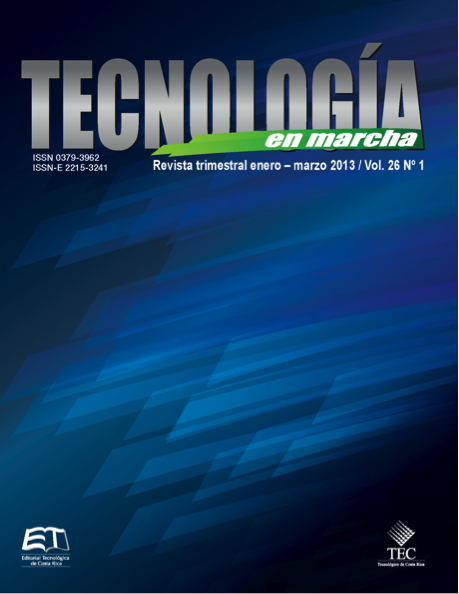Study of the genes alliinase and chitinase in materials of costarican garlic (Allium sativum L)
Main Article Content
Abstract
Garlic production in Costa Rica has been affected by the quality and quantity of the harvested seeds. Bulb production has also been deteriorated by diseases. However, this crop is preferred for its flavor, considered superior to the one imported from China. Pungency of garlic is partially due to the action of the alliinase enzyme. Furthermore, the resistance to certain pathogenic fungi is influenced by the chitinase enzyme activity. The encoding genes for both enzymes were analyzed in this study, by using in vitro plantlets obtained from local materials from Llano Grande, Santa Ana, Miramar and San Ramon zones and garlic imported from China. By using these genes, DNA sequences were compared and studied in order to find differences that allow the characterization of various materials. The results showed the presence of different alliinase gene copies. The chitinase gene presented a highly conserved sequence in all materials tested. Two highly conserved introns were found in the Costa Rican germplasm and the Asian reference material. It was concluded that Costa Rican garlic is very similar to the Asian. Also, the first report of the existence of introns in the chitinase of garlic is presented here.
Article Details
Los autores conservan los derechos de autor y ceden a la revista el derecho de la primera publicación y pueda editarlo, reproducirlo, distribuirlo, exhibirlo y comunicarlo en el país y en el extranjero mediante medios impresos y electrónicos. Asimismo, asumen el compromiso sobre cualquier litigio o reclamación relacionada con derechos de propiedad intelectual, exonerando de responsabilidad a la Editorial Tecnológica de Costa Rica. Además, se establece que los autores pueden realizar otros acuerdos contractuales independientes y adicionales para la distribución no exclusiva de la versión del artículo publicado en esta revista (p. ej., incluirlo en un repositorio institucional o publicarlo en un libro) siempre que indiquen claramente que el trabajo se publicó por primera vez en esta revista.

